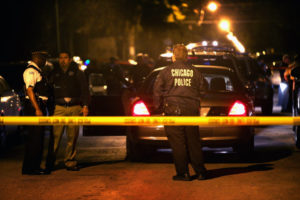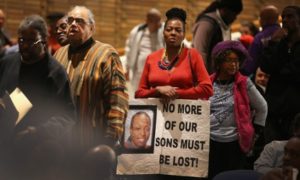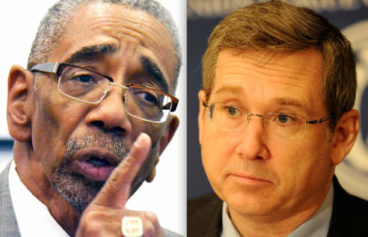
Last weekend was one of the bloodiest weekend’s Chicago has seen this year as a confirmed five people were killed with roughly 22 others wounded due to gun violence.
The exact number of injured citizens since Friday has been wavering, with some reports citing numbers as high as 36.
The victims vary in age, gender and backgrounds, but many of the deaths are believed to be the result of hip-hop fueled gang wars that have long plagued the area.
For the mother of 17-year-old Gakirah Barnes, who was one of the slain citizens over the weekend, the situation is so hopeless that she has found a bit of relief in her daughter’s passing.
“At least I don’t have to constantly worry about what’s going to happen to her out on the street no more,” she said as she continued to cry and inspect the cemetery plot where her daughter will soon be resting. Gakirah will be buried beside her father who, years ago, was also a victim of gun violence.
Unfortunately, many of the weekend’s victims are also believed to be a part of the problem in the city as several had ties to gangs.
A majority of the weekend’s gang-related deaths appear to be linked to the feud between a local up-and-coming rapper who goes by the name Lil Jay and his more established rival Keith Cozart, known by most as Chief Keef.
So far the feud has led to the deaths of 18-year-old rapper Joseph “Lil JoJo” Coleman, Mario “Blood Money” Hess, who is Chief Keef’s older cousin, and 20-year-old Odee Perry, who was killed back in 2011 shortly after appearing in one of Chief Keef’s music videos.
Now threats are being exchanged via social media as rivals are swearing to avenge the deaths of their slain allies.
According to FBI director James Comey, the gang violence in Chicago is deeply rooted, incredibly complicated and difficult to manage.
“They’re old, they’re embedded in a part of the culture in this city, and it’s an enormous challenge,” Comey said in reference to the established gangs and tension in the area before explaining that Chicago had a “more ingrained and sophisticated street gang structure than many American cities.”
Despite all the deaths, Emanuel insists that the crime rates are drastically decreasing, but it may not actually be because there are fewer deaths.
Instead, it is more likely because fewer crime-related deaths are being classified as such.
Professor Eli Silverman of the City University of New York, who is an authority on the CompStat-style data systems used by police in Chicago and other major cities, explained that politics are involved when it comes to trying to claim a low crime rate.
“The pressure from the top is unrelenting,” Silverman said before adding that one Chicago officer once told him, “You can’t hide a dead body, but you can reclassify one.”

